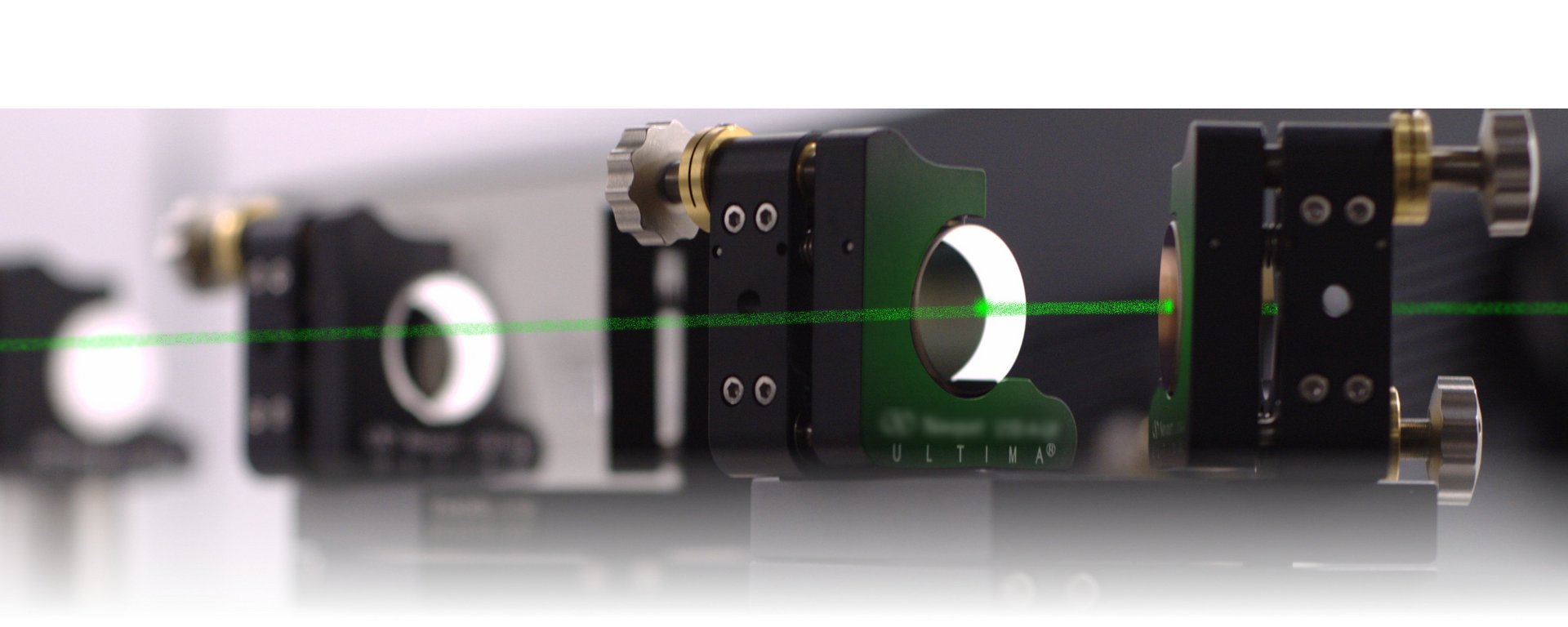Photoacoustics
Photoacoustics is a technique, which combines the advantages of the optical imaging methods with established ultrasonic techniques. With photoacoustics it is possible to connect the high optical contrast of optical imaging with the good resolution abilities of ultrasonic imaging in highly dispersive tissue. For this reason photoacoustics presents an essential new imaging method for medical engineering. For instance, using adequate contrast mechanisms photoacoustics is able to separate between tumourous and healthy tissues to detect, for example, tumours in the breast prematurely. In contrast to the established methods on the basis of x-rays photoacoustics has the additional advantage, that it does not use potentially dangerous ionizing radiation. In the future the health risks of the currently used preventive medical check-ups, like for instance the mammogram, could be reduced significantly by photoacoustics.
The combination of light and sound is possible by the use of the photoacoustic effect: Within the photoacoustic effect an ultrasonic wave is generated by incident light, which can be detected with an ultrasonic transducer. In the process the detected pressure amplitude is proportional to the optical absorption of the medium.
In cooperation with Prof. Dr.-Ing. G. Schmitz (Institute of Medical Engineering of the Ruhr-University of Bochum), Prof. Dr.-Ing. H. Ermert (Institute of High Frequency Engineering of the Ruhr-University of Bochum) and Prof. Dr. med. C. Bremer (Institute of Clinical Radiology of the University Hospital of Münster) our workgroup is developing a system, which makes the photoacoustic effect useful for medical applications: In this case the examined tissue will be illuminated by short laser pulses and the ultrasonic wave generated in the tissue is measured by the aid of a commercial ultrasonic system. The laser pulses have a pulse width of a few nanoseconds and high pulse energies. Because of the light pulse the tissue expands and contracts afterwards. In this way a pressure wave is generated, which can be detected by the ultrasonic transducer.
Since different sorts of tissues have different optical absorption behaviours, certain sorts of tissues can be systematically emphasized on the ultrasonic scan. That way blood enriched with oxygen, for instance, can be separated from not enriched on the ultrasonic scan. This can be used as a contrast mechanism for the detection of tumours. To cut a long story short: By using the photoacoustic effect we teach an ultrasonic system to see colours.
Reference:
- M.P. Mienkina, N.C. Gerhardt, J. Waldeck, M. Breede, C. Bremer, M. Hofmann and G. Schmitz, Evaluation eines kommerziellen Ultraschallgeräts für den Einsatz im photoakustischen Reflexionsmodus, Biomedizinische Technik 52, (2007) Suppl 1 - accepted
- M.P. Mienkina, K. Hensel , T.N. Le, N.C. Gerhardt, Ch. Hansen, M. Hofmann and G. Schmitz , Experimental Characterization of Ferucarbotran as a Photoacoustic Contrast Agent, Proc IEEE International Ultrasonics Symposium 0, 393 (2006)
- M.P. Mienkina, K. Hensel, T.N. Le, N.C. Gerhardt, I. Kopf, E. Bründermann, M. Havenith, M. Hofmann, G. Schmitz, Experimentelle Charakterisierung von Ferucarbotran als photoakustisches Kontrastmittel, Proc Gemeinsame Jahrestagung der Deutschen, Österreichischen und Schweizerischen Gesellschaften für Biomedizinische Technik 51, V180 (2006)
Colleagues:

